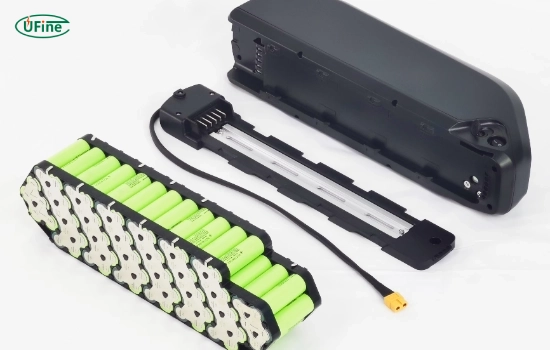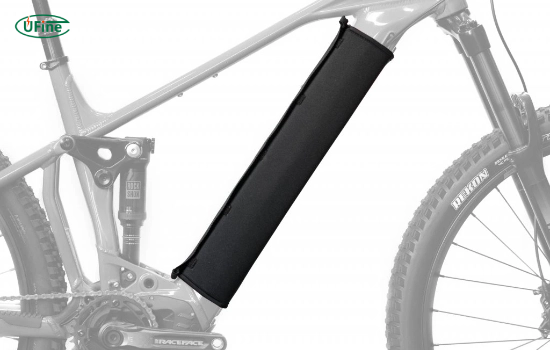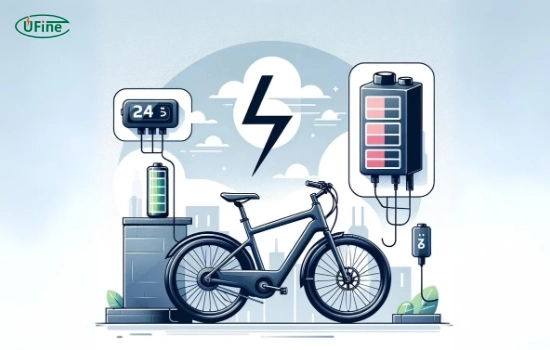Electric bicycles (e-bikes) are becoming increasingly popular as a sustainable and efficient mode of transportation. At the heart of every eBike is its battery, which powers the motor and allows you to enjoy a smooth ride. However, like any electronic device, eBike batteries require proper care and protection to ensure longevity and optimal performance. A cover is one of the best ways to protect your eBike battery. This article will explore the importance of covering your eBike battery, the various types of covers available, how to choose the right one, and best practices for battery care.
Part 1. Understanding ebike batteries
E-bike batteries are not just simple power sources; they are sophisticated energy storage systems that play a crucial role in the overall functionality of electric bicycles. Most modern eBikes utilize lithium-ion batteries, which offer several advantages over older technologies.
What Makes eBike Batteries Unique?
- High Energy Density: Lithium-ion batteries provide significant power relative to their weight. This means eBikes can achieve longer ranges without adding excessive weight, making them more efficient for daily use.
- Long Lifespan: With proper care, lithium-ion batteries can last 3 to 5 years or even longer. They can withstand hundreds of charge cycles without significant degradation, which is essential for regular riders.
- Smart Technology: Many eBike batteries come equipped with Battery Management Systems (BMS) that monitor the battery’s health, temperature, and charge levels. This technology helps prevent overcharging, overheating, and deep discharging, ensuring the battery operates within safe parameters.
- Environmental Impact: Lithium-ion batteries are generally more environmentally friendly than lead-acid batteries, which contain toxic materials. Lithium-ion batteries in e-bikes are becoming more prevalent as the demand for sustainable transportation grows.
Part 2. Why cover your ebike battery?
Covering your eBike battery is essential for several reasons:
- Weather Protection: eBike batteries are sensitive to extreme temperatures. Cold weather can reduce their efficiency, while excessive heat can damage them. A cover can help regulate temperature and protect against moisture.
- Physical Protection: Covers can shield the battery from physical impacts, dirt, and moisture, which can lead to corrosion or other damage. This is particularly important for riders who frequently navigate rough terrain.
- Theft Prevention: A battery cover can deter theft by making the battery less visible and accessible. This added layer of protection can give you peace of mind when parking your eBike in public areas.
Part 3. Types of ebike battery covers
When it comes to covering your eBike battery, several options are available:
- Neoprene Covers: These are waterproof, UV-resistant, and provide insulation against cold temperatures. They are easy to install and remove, making them popular among eBike enthusiasts.
- Hard Shell Cases: Offering maximum protection, these cases can shield the battery from impacts and environmental factors. They are ideal for off-road riders or those who frequently transport their e-bike.
- DIY Solutions: For those on a budget, creating a custom cover using materials like foam or fabric can be effective. This allows you to tailor the cover to your specific battery size and shape.
What Are the Best Materials for an eBike Battery Cover?
Choosing the right material for your eBike battery cover is crucial for ensuring optimal protection. Here are some of the best materials to consider:
- Neoprene: Known for its flexibility and durability, neoprene is an excellent choice for waterproof and insulated covers. It can withstand harsh weather conditions and is resistant to UV rays.
- Polyester Fabric: Lightweight and breathable, polyester fabric can protect against dust and moisture. While it may not offer as much insulation as neoprene, it can be affordable for casual riders.
- Plastic or Polycarbonate: Hardshell cases made from durable plastics or polycarbonate can protect against impacts and environmental factors. Due to their strength and resilience, these materials are often used in commercial products.
- Foam Padding: For DIY solutions, foam padding can create a custom cover that provides cushioning and insulation. It can be used in conjunction with other materials for added protection.
Part 4. How to choose the right ebike battery cover?
Choosing the right cover for your eBike battery involves considering several factors:
- Material: Look for durable, weather-resistant materials like neoprene or heavy-duty plastics. The suitable material will depend on your riding conditions and personal preferences.
- Fit: Ensure the cover fits your specific battery model snugly to prevent any movement that could lead to damage. A well-fitted cover will also help maintain temperature control.
- Ease of Use: A cover that is easy to put on and remove will encourage regular use. Consider features like zippers, Velcro, or elastic bands for convenience.
- Ventilation: While protection is essential, ensuring the battery can breathe is vital. Some covers come with ventilation holes or breathable materials that allow heat to escape, preventing overheating.
- Aesthetics: While functionality is critical, you may also want a cover that matches your eBike’s style. Many manufacturers offer a variety of colors and designs to suit your taste.
Part 5. Best practices for ebike battery care
Proper care and maintenance of your eBike battery are crucial for extending its lifespan and ensuring optimal performance. Here are some best practices to follow:
- Charge Regularly: Avoid letting your battery discharge completely. Aim to keep optimal health between 20% and 80% charged. Frequent deep discharges can shorten the battery’s lifespan.
- Store Properly: If you’re not using your eBike for an extended period, store the battery in a cool, dry place at around 50% charge. This helps prevent degradation and maintains battery health.
- Avoid Extreme Temperatures: Always remove the battery from the bike and store it indoors during extreme weather conditions. High temperatures can lead to thermal runaway, while cold temperatures can reduce performance.
- Monitor Battery Health: Regularly check for any signs of damage, such as swelling or corrosion, and replace the battery if necessary. Keeping an eye on performance metrics can help you identify potential issues early.
Common Mistakes to Avoid
While caring for your eBike battery, be mindful of these common mistakes:
- Overcharging: Deleting the battery after fully charging can degrade its lifespan. Use a smart charger that automatically stops charging when the battery is full.
- Ignoring Temperature: Charging or using the battery in extreme temperatures can lead to irreversible damage. Always check the manufacturer’s recommendations for optimal operating conditions.
- Neglecting Maintenance: Regular inspections can catch issues early, preventing costly replacements. Make it a habit to check your battery’s condition before long rides.
Part 6. FAQs
-
Should I cover my eBike battery?
Covering your eBike battery is advisable to protect it from environmental factors and physical damage, ultimately extending its lifespan. -
How can I protect my eBike battery?
You can protect your eBike battery by using a protective cover, storing it indoors during extreme weather, and ensuring it is adequately charged. -
How do I store my eBike battery over the winter?
Store your eBike battery in a cool, dry place at around 50-60% charge level. Check the charge every few months and recharge as needed. -
How do I protect my eBike battery from being stolen?
To prevent theft, use a lock for your eBike, consider installing a GPS tracker, and cover the battery to make it less visible. -
What are the signs of a failing eBike battery?
Signs of a failing battery include reduced range, swelling, unusual noises during charging, or a noticeable drop in performance.
Related Tags:
More Articles

LiPo Battery Discharge Rate Guide & Calculation Tips
Understand LiPo battery discharge rates, C-ratings, and how to calculate max current. Essential guide for RC, drones, and electronics users.
High‑Capacity 3S LiPo Batteries: 5000 mAh vs. 10000 mAh
Compare 3S LiPo 5000mAh vs 10000mAh batteries by weight, power, and use. Find the best fit for your drone, RC car, or boat setup.
Top 5 Applications for Small 3S LiPo Batteries
Small 3S LiPo batteries power drones, RC gear, wearables, and robotics with high energy and low weight. Making them ideal for compact electronics projects.
Building and Charging Your Own 3S LiPo Pack: A Step‑by‑Step Guide
Learn how to build, balance, and charge a 3S LiPo battery pack safely at home with this complete DIY guide for hobbyists and beginners.
How to Choose the Right LiPo Battery Plug Type?
Discover the best LiPo battery plug types, how to choose them, and expert tips for safe usage, soldering, and maintenance.






